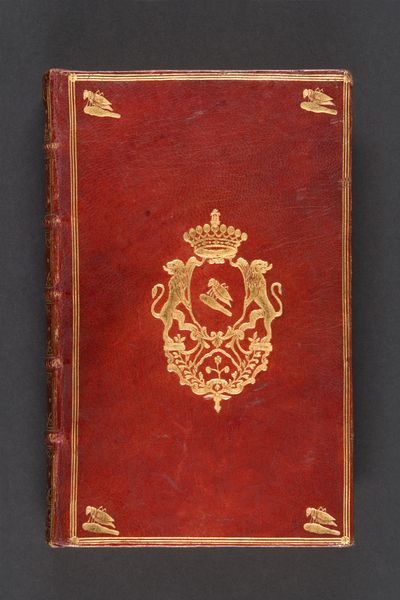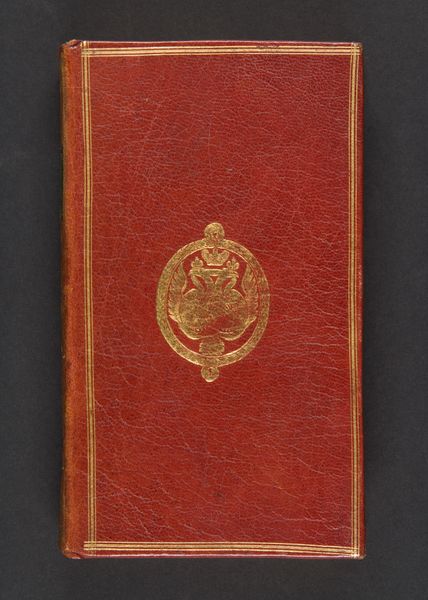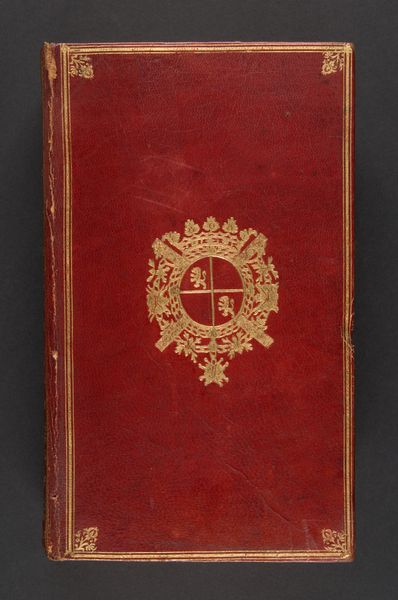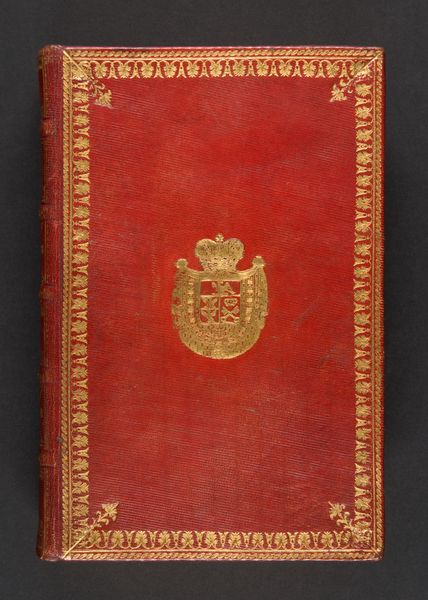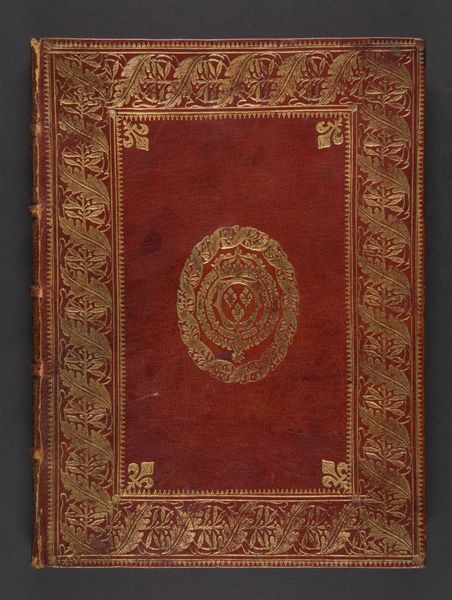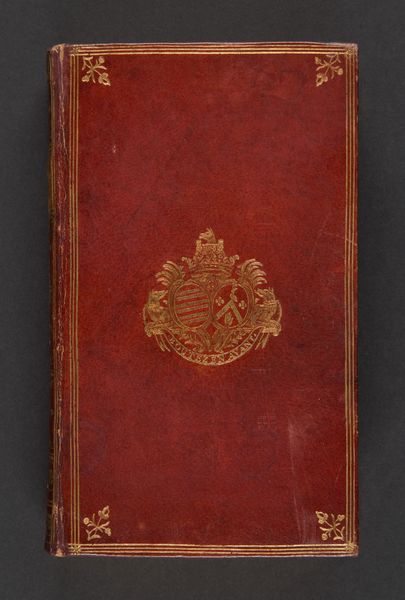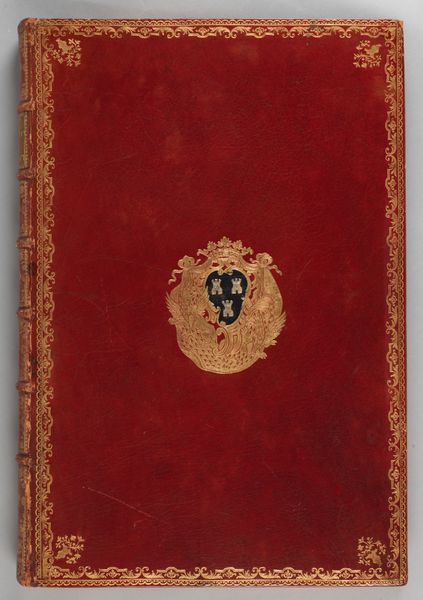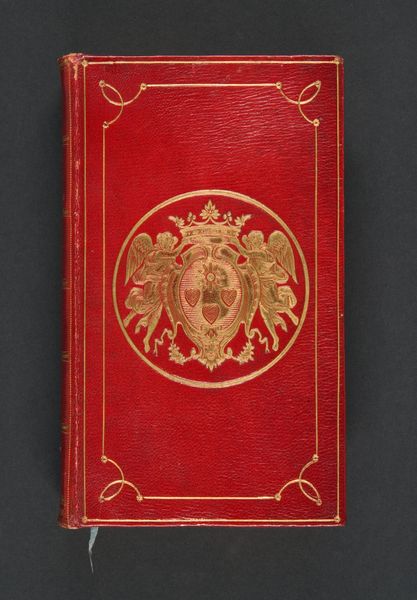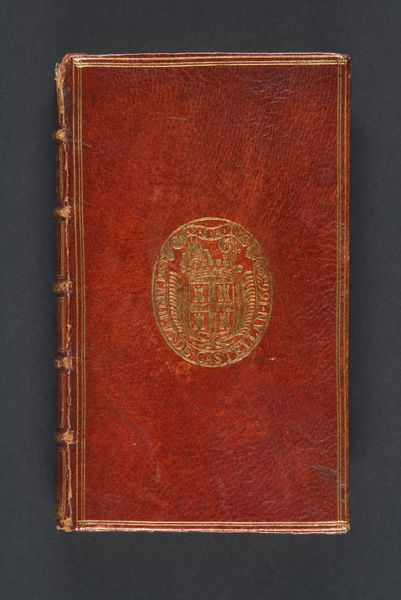
L'art de former les jardins modernes, ou, L'art des jardins anglois : traduit de l'anglois : à quoi le traducteur a ajouté un discours préliminaire sur l'origine de l'art, des notes sur le texte, & une description détaillée des jardins de Stowe, accompagnée du plan 1771
0:00
0:00
gold, embossing
#
neoclacissism
#
book binding
#
gold
#
embossing
#
embossed
#
france
#
decorative-art
Dimensions: lxiv, 406 p., 1 folded leaf of plates, plan, Height: 8 11/16 in. (22 cm)
Copyright: Public Domain
Curator: Here we have a striking example of decorative art: the tooled leather binding of "L'art de former les jardins modernes, ou, L'art des jardins anglois," a book translated and expanded by Charles Antoine Jombert in 1771. Editor: The book exudes power with that central gold emblem against the brick red cover. I feel a sense of restraint and perhaps longing for bygone aristocracy? Curator: Jombert's book itself is an artifact, but its beautiful, crafted binding reflects the cultural fascination with landscape architecture. It invites consideration as an artistic expression of status. The gold embossing isn't just surface decoration but shows an intentional, meticulous, and highly skilled production process. Editor: And consider the context—late 18th century, France, on the cusp of revolution. While the commoners fight for fair opportunities, we have wealthy elites studying and investing in shaping an idyllic natural world, contained and controlled for pleasure and status, removed from the harsh reality outside the garden walls. Curator: Indeed. And what is nature except an unruly force, bent and bound through manual processes? What narratives and discourses shaped this consumption? Look at the fine detailing on the embossed crest, the use of gold as an ideological marker; nothing is haphazard. Editor: What strikes me, too, is how a book—a vehicle for ideas and knowledge—becomes an object, almost a symbol, in itself. Who had access to this book? Who had the means to own and appreciate such craft? These beautiful objects solidify cultural privilege and reinforce hierarchical social norms. Curator: Precisely. Bookbinding as a craft often gets overlooked as purely functional; to appreciate the level of specialized artisanal knowledge and skill and the hierarchy between those crafting and those consuming is crucial. It shifts how we define artistic value. Editor: Viewing this book awakens these crucial perspectives. It moves us beyond mere appreciation of its beauty into critically interrogating what that beauty signifies, whose stories it silences, and which voices gain visibility and power. Curator: Absolutely. Understanding how "art" gets materialized as both a source of beauty and capital exposes historical values inherent in these gorgeous things. Editor: So this ornate volume holds not just knowledge about gardens but also uncomfortable knowledge about society itself. Thank you for helping bring all these notions together. Curator: It’s crucial to approach artifacts like this with that wider lens, always accounting for human capital. Thank you for your insights, too!
Comments
No comments
Be the first to comment and join the conversation on the ultimate creative platform.
